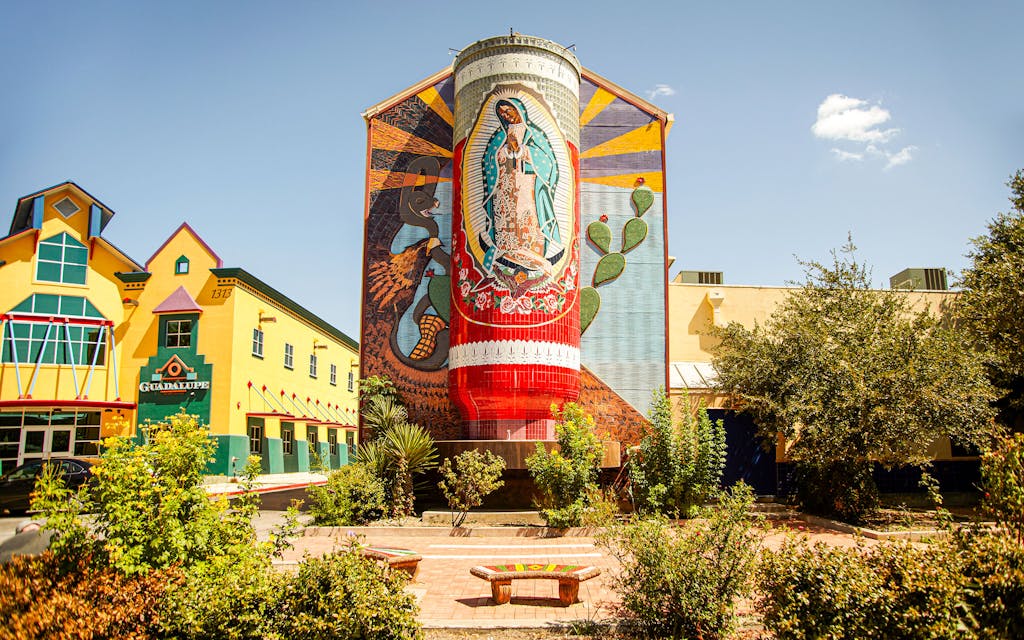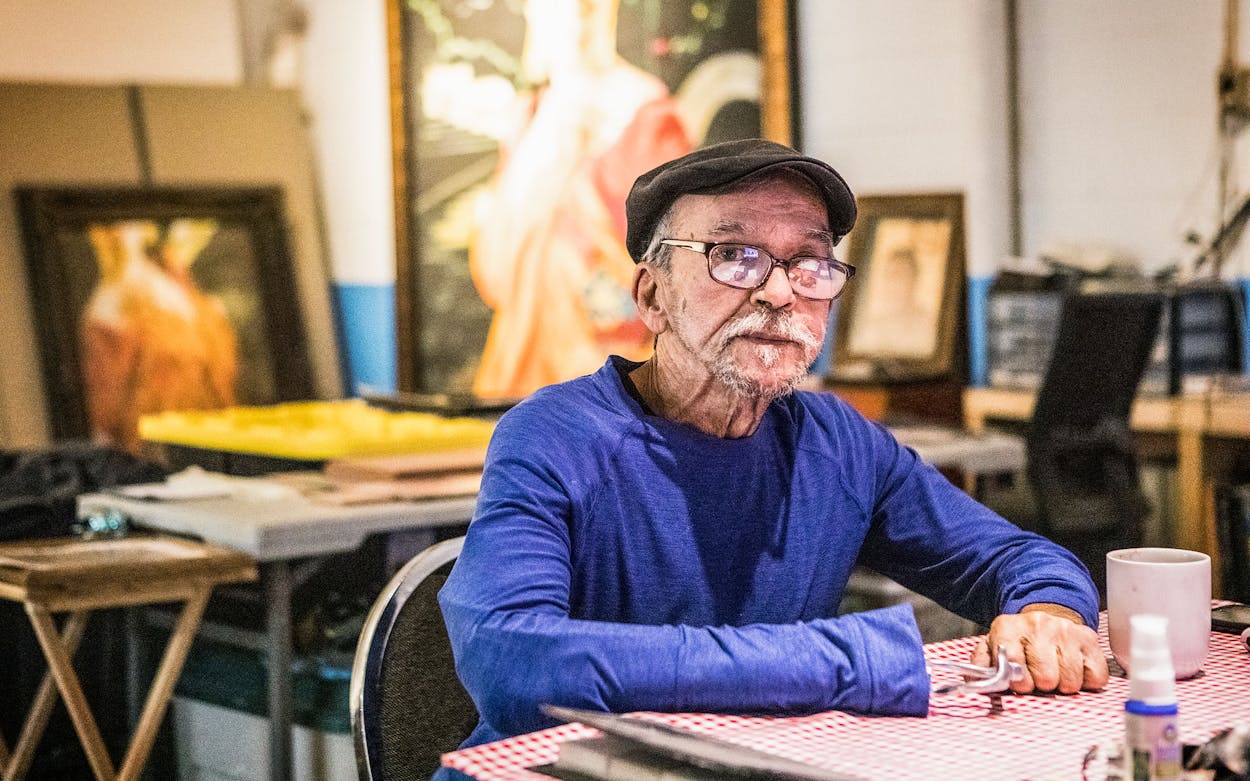In the early hours of February 13, 2023, San Antonio lost a titan of its rich artistic heritage. Jesus “Jesse” Treviño was 76 when he died. It wasn’t last year’s bout with cancer that ultimately took him, but that certainly cleared the way for his quiet exit last Monday morning. It was a day I know Jesse had thought about since he was a young man. The only question left, he once told me as we worked together on his biography, was: What will happen next?
Jesse’s career can be summed up by stating that his art is in the Smithsonian, the San Antonio Museum of Art, three presidential libraries, countless private collections, and wherever King Charles of England keeps his art, but that doesn’t tell nearly enough about Jesse’s life.
Jesse’s father, Juan Treviño, was from Sabinas Hidalgo, Mexico; his mother, Dolores Campos, was from New Braunfels. The couple met and started a family in Texas, moved briefly to a one-room house on the outskirts of Monterrey, Mexico, where Jesse was born on December 24, 1946, and then returned to San Antonio in 1950. This made Jesse a Mexican American in every sense of the term. (He was naturalized in 1969.)
From an early age, Jesse put nearly every ounce of himself into fulfilling a boyhood revelation: not only did he have a gift for art, but when he really tried, art brought the reward he most craved—attention. A spotlight for himself and his art, always together.
His longing developed from having eleven siblings, who, for a short time, all lived together in the family’s two-bedroom house on Monterey Street in San Antonio’s West Side. The Treviños’ neighborhood, Prospect Hill, was pleasantly filled with families, football in the streets, and neighbors who acted neighborly. But the house could be crowded.

In 1953, when Jesse was in first grade at David Crockett Academy, he won a citywide art contest by drawing two doves on a piece of manila paper. Somehow, his mother took time from her extraordinarily busy day to attend the awards ceremony at the Witte Museum. This—Jesse’s artistic origin story—became his favorite memory of them all.
“I’ll always remember that because my family was there,” Jesse told me in 2012, when we were still early in our conversations about writing his biography. “Here I was, the first time in a public setting. I had won a contest and I was acknowledged and recognized and rewarded. It was one of the greatest feelings in the world to me. I was like, ‘Wow!’ I’d never known anything like that. I didn’t need much attention, but I didn’t get any attention. And that . . . well, I got their attention.”
Jesse won enough art contests throughout high school to earn a scholarship to New York’s renowned Art Students League. Living in Greenwich Village, he took portrait classes with William F. Draper, a former Navy combat artist who’d been commissioned to paint John F. Kennedy inside the White House. Draper represented an Art Students League lineage going back to early American impressionist William Merritt Chase and the founder of the Cape School of Art, Henry Hensche. Everything Jesse knew about painting was broken down and rebuilt to focus on using color appropriately rather than relying on sketching. His work from this time shows a very good artist on the verge of becoming extraordinary.
The prestigious art school wasn’t a four-year college, so Jesse wasn’t protected from conscription as the Vietnam War ramped up in 1966. Jesse could have returned to his native Mexico with no legal repercussions, but so many of his brothers had already served in the military. When his number was called, he went to war.
On February 23, 1967, after three months in the Mekong Delta, twenty-year-old Jesse stepped on a land mine. While dying in a rice paddy, the target of snipers’ bullets, he asked God for a second chance while forming an eagerness to show the beauty of his hometown with his art. The nerves in his right hand—his painting hand—burned mercilessly when he was finally helicoptered out of the jungle.
It took more than a year to recover from wounds on his legs, torso, and right arm, but he retrained himself to live and paint as a left-hander by the time his right arm was amputated below the elbow, in 1970.
Most crucially, he met art instructor and Chicano activist Mel Casas at San Antonio College, who emphasized choosing his subject matter for a purpose, which aligned perfectly with Jesse’s battlefield wish.
Along with Casas, César Martínez, Santos Martinez, and other pioneering Chicano artists, Jesse broke down barriers against Latinos by getting his art into galleries and museum shows, and he redefined how Texas art was perceived by the rest of the country. He accomplished both by putting the faces, buildings, cars, and trucks of his neighborhood on canvas. He documented the West Side in deep detail with photorealist paintings, and then he beautified it with murals celebrating Mexican American heritage and culture, San Antonio history, and some of the local people whose social contributions might have otherwise gone unnoticed.
Jesse’s art is everywhere in San Antonio—in cafes, churches, and businesses. San Antonio was his home, his muse, his inspiration, and his canvas. He made his projects to last, and he knew his art would be around for another hundred years.
“I want to do things with a lot of permanence,” he said, adding coyly, “I’ve learned things as an artist.”
Jesse’s life was the archetypal success story, bordering on heroic and even epic. But now the spotlight can only shine on his art. It’s what comes next. And San Antonio isn’t quite the same this way.
- More About:
- Art
- Obituaries
- San Antonio






